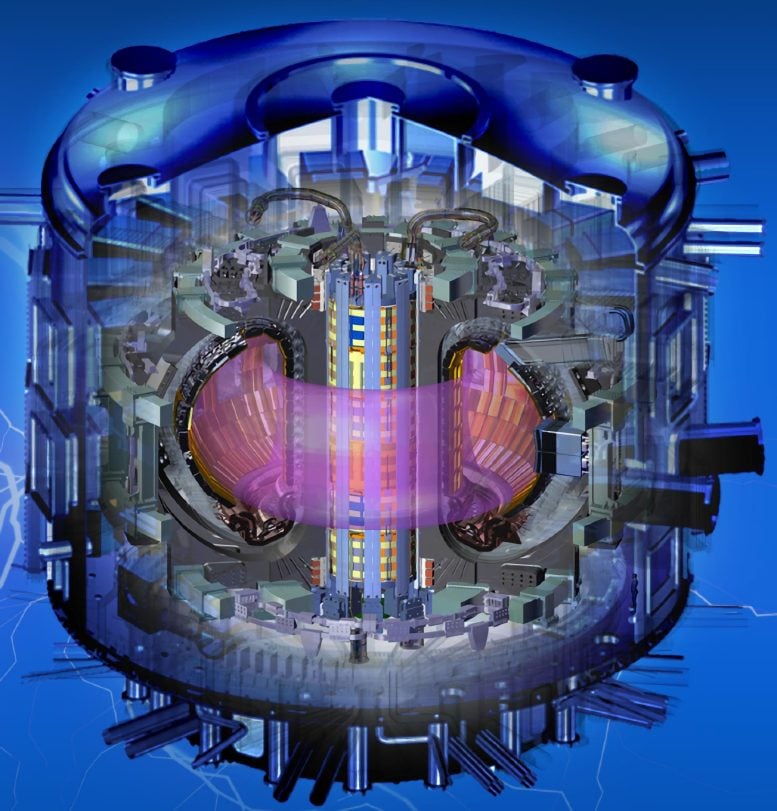
The Central Solenoid is a five-story, 1,000-ton magnet, in the center of the ITER. It consists of 22 miles of superconducting cables and will drive 15 million amperes of electrical current (millions of times more than in a house) in ITER’s plasma. Credit: General Atomics
Fusion nuclear science and technology specializes in investigating the extreme nuclear fusion environment. This environment has very high temperatures, particle fluxes, neutron irradiation, and other harsh conditions.
Fusion science and technology research includes the examination of designs and materials for future fusion power devices. It also includes new technologies and integrated systems for generating electricity from fusion reactions, breeding tritium (the fuel needed for the fusion reaction), engineering high-temperature superconducting magnets, and exhausting the extremely hot gases that are released during fusion.
Additionally, fusion nuclear science addresses challenges related to the safety and security of fusion energy. For example, fusion nuclear science is studying how to ensure the supply of tritium fuel and how to build fusion power plants that can be operated safely despite their exceptionally high heat and pressure conditions.
Fusion Nuclear Science and Technology Quick Facts
- ITER’s magnets use cables of a superconducting material, niobium tin, that combined measure more than 100,000 kilometers (60,000 miles) long. That’s enough to stretch around Earth’s equator twice.
- The United States is developing key fusion nuclear technologies including methods of using magnets to contain fusion and specialized materials that can withstand long exposure to extreme fusion conditions.
DOE Office of Science & Fusion Nuclear Science and Technology
In the Office of Science, fusion nuclear science and technology is funded within the Fusion Energy Sciences (FES) program since R&D in these areas support the development of fusion as an energy source. The program supports multiple research areas including the U.S. Fusion Blanket and Tritium Fuel Cycle program. Research focuses on methods of extracting the fuel from the blanket, which requires expertise from national laboratories, universities, and private industry.
Within the FES program, researchers develop essential technologies for the ITER project, including the central solenoid, one of the world’s largest and most powerful superconducting magnets. Other activities supported within FES include fusion safety and system studies. Fusion energy system studies look at long-term areas, such as a future fusion power plant, and determine gaps in fusion nuclear science and technology. Identifying these gaps help programs prioritize research efforts over time.

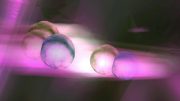
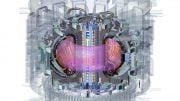

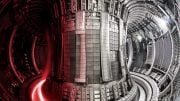
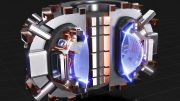
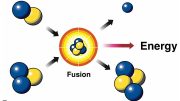
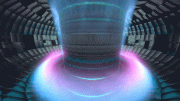
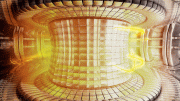
Fusion is a swindle, the science is wrong and will never work.
Most people would think your joking until they look at the track record. Fusion been created for decades always taking much more energy to create than what comes out. 12 years ago, it was found that if the electricity was too much into the reaction, it would begin to cool instead of getting hotter. Then, there was when too much fuel going in to the reaction would start putting it out.
When two protons are fused into an atom with two protons, some magic energy isn’t going to result from the fusion. That is like saying 1+1=2.1. It is only a conservation of mass and energy by turning kinetic energy into potential energy.
What scientists are looking for is called quark plasma and, instead of massive amounts of electricity that scientists must provide to create the reaction, the dark matter of space that causes the force of gravity will become the endless catalyst a reaction like this would need. Once atoms get broken down into quarks, it is the sheer density and pressure of space that keeps the quarks apart indefinitely. The strong force is between quarks and the matter that makes up space which I believe is a field of sterile electron neutrinos that live at absolute zero. Once the quark plasma is made, the strong force ejects the neutrinos out of the reaction as gamma rays. The endless supply of incoming space becomes the catalyst requiring nothing from us to keep it going except to harvest the energy it creates. The neutrinos move invisibly into the walls of the reactor but come out as energy. For all intents and purposes, a quark plasma reactor will be a Dyson sphere.